- Home
- John Benteen
Fargo (A Neal Fargo Adventure #1)
Fargo (A Neal Fargo Adventure #1) Read online
Issuing classic fiction from Yesterday and Today
Fargo lives with a gun in his fist. Guns and killing are all he knows. And Fargo likes what he knows. Want to start a revolution? Want to stop one? Send for Fargo. Want to blow a bridge, stage a prison break, rob a bank? Fargo’s your man. The Army taught Fargo how to kill with pistol, rifle, machine gun. He became an expert with knives, shotguns and women on his own time. Fargo hates the quiet life. He knows he’s going to get it sooner or later. He hopes it won’t be too much later because he wouldn’t know how to be old and comfortable. So while he lasts, Fargo plans to grab the world by the throat and take what he wants. If the world doesn’t like that, it can try to stop him ... if it can.
FARGO
FARGO 1
By John Benteen
Copyright © 1969 by John Benteen
Published by Piccadilly Publishing at Smashwords: June 2013
Names, characters and incidents in this book are fictional, and any resemblance to actual events, locales, organizations, or persons living or dead is purely coincidental.
This ebook is licensed for your personal enjoyment only. This ebook may not be re-sold or given away to other people. If you would like to share this book with another person, please purchase an additional copy for each reader. If you’re reading the book and did not purchase it, or it was not purchased for your use only, then please return to Smashwords.com and purchase your own copy. Thank you for respecting the hard work of this author.
This is a Piccadilly Publishing book
Cover image © 2013 by Edward Martin
edwrd984.deviantart.com
Published by Arrangement with the Author’s Estate.
John Benteen’s Fargo Series – Pure Adventure
By James Reasoner
Neal Fargo is a fighting man.
Boiled down to the essence of the character, that’s really all you need to know. But in the hands of his creator John Benteen – actually author Ben Haas – Fargo is also a fully rounded individual who stars in some of the best adventure novels written in the 20th Century.
Fargo was born sometime around 1875, quite possibly on a small ranch in New Mexico Territory, and was orphaned following an Apache raid on his parents’ home when he was only four years old. Taken in by another ranching family, young Neal suffered a hard existence before striking out on his own at the tender age of twelve. From that point on, life got even harder, but it served to teach Neal Fargo the most important lesson he ever learned.
How to survive.
Along the way he learned how to do plenty of other things, too, starting with how to punch cows and make a hand as a cowboy. He also worked as a logger, an oilfield roughneck, a bouncer in a New Orleans whorehouse, a professional boxer, even an assistant to a matador. But he was best at fighting not in a prize ring but in the arena of life and death, as he discovered during the Spanish-American War while serving as one of Teddy Roosevelt’s Rough Riders. At the same time he became lifelong friends with the man who would one day be President of the United States.
After the war, Fargo became a soldier of fortune, the sort of man you hired if you had a tough job that needed doing anywhere in the world, a job that involved danger and possible death.
That’s where John Benteen picks up Fargo’s story. He’s in his late thirties, a seasoned veteran of many campaigns, a man uniquely suited to deal with the challenges of the early 20th Century. As a result of Benteen’s decision to set the Fargo novels during this time period, while the books are usually classified as Westerns, in most cases they really aren’t. Some, such as the novel Apache Raiders, have strong Western elements and fit into that genre. But most of them are pure adventure novels, as Fargo’s jobs take him all over the world, from the Philippines (Massacre River) to Panama (Panama Gold), from the Yukon (Alaska Steel) to the Argentinian pampas (The Black Bulls) to a lost city in Mexico (Valley of Skulls). This globe-trotting sets Fargo apart from nearly all the other paperback Western series published in the same era and helped establish its long-lasting appeal.
Neal Fargo is an ugly man, his face battered and scarred, his hair prematurely white, but his rugged features possess a strong appeal for women anyway, probably due in some part to his supreme self-confidence that never becomes arrogance. That self-confidence is fully justified. He’s an expert bare-knuckles fighter, as you might expect given his background, and highly proficient with weapons, including his Fox Sterlingworth twelve-gauge sawed-off shotgun which was presented to him by Teddy Roosevelt himself and what may well be his favorite weapon, a wicked Batangas knife that Fargo picked up in the Philippines. He can fell a tree as a logger, fight a bull, ride a raft down white-water rapids. Whatever it takes to do a job, Fargo can do it. He’s hard, pragmatic, mercenary. But he’s also intensely loyal to his friends.
You don’t want him as an enemy.
You also don’t want to miss any of the novels about him, given to us by one of the great unsung authors of popular fiction in the second half of the 20th Century, Ben Haas (1926 – 1977).
Starting in the early Sixties, Ben Haas produced an incredible amount of high-quality fiction during the next decade and a half. As John Benteen, he created two iconic characters, Neal Fargo and Jim Sundance, as well as writing a top-notch stand-alone Western novel, The Trail Ends at Hell. Under the house-name Jack Slade he contributed an excellent entry to the Lassiter series entitled A Hell of a Way to Die. As Thorne Douglas he wrote the Rancho Bravo series, and as Ben Elliott and Richard Meade he authored a number of excellent stand-alone Western novels.
Ben Haas was a lot more than just a Western writer, though. He wrote fast-moving novels of international intrigue under his Richard Meade pseudonym, and also under that name, as well as Quinn Reade, he turned out several highly regarded novels of heroic fantasy. As Ken Barry, Sam Webster, and William Kane (a house-name used by at least one other author), he wrote novels that were published as the sort of soft-core erotica that was popular during the early Sixties, but like much of the work in that genre, Haas’s novels are much more complex and emotionally honest than their lurid covers might make them appear.
But while Ben Haas was carving out a career as one of the most dependable and versatile authors of paperback fiction under a variety of names, he also published a long string of successful, critically acclaimed historical and mainstream novels in hardback under his own name, beginning with the Civil War tale The Foragers. Many of these, such as Look Away, Look Away and The Last Valley addressed important social matters such as racial prejudice and the damage to the environment. These aren’t weighty polemics, however, but rather fast-paced, well written, and highly entertaining tales told by a master storyteller.
Those two words – “master storyteller” – sum up Ben Haas as well as “fighting man” gives us the essence of Neal Fargo. Unlike the loner Fargo, however, Haas accomplished his achievements while being happily married, raising a fine family, and traveling and living both in the U.S. and abroad. Sadly, his life was cut short by a heart attack at a relatively young age, and we have to regret not only the loss to his loved ones but also the many fine books that surely would have emerged from his typewriter in the future. But he’s left us with a great legacy of entertainment that has inspired countless other authors, myself among them, and continues to do so.
Now, thanks to Piccadilly Publishing, readers get a chance to revisit or discover for the first time the pure pleasure that reading a Ben Haas novel can be. Sit back and enjoy these yarns about Neal Fargo, some of the best adventure novels ever written.
Chapter One
He came into El Paso on the westbound train: a tall man wearing a battered old cavalry campaign hat, but otherwise
neatly, conservatively dressed in white shirt, tie, corduroy coat and sharply creased pants. He could have been a prosperous cattleman or an operator in oil leases. In reality, he was a soldier of fortune. The .38 Colt Army revolver in the shoulder holster was worn so that it was invisible under his jacket.
He came down off the Pullman step lithely, gray eyes sweeping the station with instinctive alertness. His shoulders were wide, his legs long and lean from much riding; but it was his face that drew the quick attention, the sidelong gazes, of the women waiting there for other arrivals.
It was a weathered face with high cheekbones, a craggy nose, a long jaw, a solid chin; the face of a man in his late thirties who had been everywhere, seen everything, and whose life had burnt all softness out of him. The women saw, when he took off the old cavalry hat, that the close-cropped hair through which he ran a big, scarred hand had turned prematurely snow-white. The contrast with the mahogany tan of his skin was startling. Regardless of whom they were meeting, the women, young and old, kept looking at him covertly.
Fargo was aware of their eyes. He was aware of everything, everybody around him, always: that was his business and the thread on which his life often hung. As he settled the hat back in place, with careful attention to the precise angle, he let his eyes range over the crowd, over the women, with a slow boldness far different from their own secretive glances. Finding nothing to either alarm or interest him, he gave the Pullman porter a five-dollar gold piece and picked up the small leather suitcase the man had taken off the car.
He walked down the train to the baggage car to make sure the trunk was unloaded. The trunk was important, very important.
In due course, it came off. Fargo’s eyes never left it while it was being handled. Meanwhile, he took out a long, thin, very dark cigar and clamped it between white teeth. After he had claimed the trunk, he helped a porter load it in the back of a hack and got in beside the driver. “I want to go to a cheap hotel,” he said. “A very cheap hotel.”
The driver looked at him, surprised and disappointed. Fargo looked back at him, met his eyes. Hastily the man said, “Yes, sir!” and started the car. He did not look at Fargo for the rest of the trip.
It had been a long time since Fargo had been in El Paso. The place was booming. A new infantry brigade, under the command of an officer named Pershing, had just been brought into Fort Bliss. That was good for business.
War was always good for business, he thought. Instinctively, his eyes turned in the direction of the river. Across the Rio in Mexico, revolution was in full blast. Everybody was fighting everybody else—Villa against Obregon and Carranza and Zapata farther south, and all of them against Huerta, who had taken over the government after the execution of Madero—who, in turn, had overthrown Diaz. Mexican politics was a bucket of snakes; the whole country was riven by warfare. That was why Fargo had come to El Paso. It was the gateway to the revolution; and in revolutions there was always work for a man like him.
The hotel was in the quarter down by the river, a cheap frame structure badly in need of paint, its warped boards silver in the ferocious May sunlight. Fargo tipped the driver two dollars after the trunk was unloaded, and all trace of sullenness vanished from the man. Fargo registered and paid in advance for two nights. That left him, he calculated, eating money for two days, enough for booze, and, if he had to pay for it, a woman.
The room contained washstand, pitcher, basin, rickety bureau, and a sagging bed with an iron stead. Its floor was covered with scabby linoleum.
Now Fargo locked the flimsy door of the cheap room. He stripped to the waist and washed himself clean of travel dirt. The muscles in his long arms and in his torso rippled with every movement; there was not an ounce of fat on him. His body was burnt almost as brown as his face, and there were scars on it. Looking at himself in the mirror so cheap and ripply that it was almost like seeing his reflection in a windblown pond, he thought wryly that he accumulated scars the way other travelers bought picture postcards. The blaze of puckered tissue across his shoulder had come from the rake of a Spanish bullet in the charge up Kettle Hill in Cuba, in Bucky O’Neill’s company of Roosevelt’s Rough Riders regiment. The scar tissue on the rugged face was of another sort; that had come from professional boxing. The puckered scar in his forearm was the result of a miner’s bullet in Skagway, where Fargo had run a faro layout. The arm had bothered him for a while, but it was all right now. The miner was dead.
He did not dwell long on his past; he was a man who lived in the present, for the present. He did not even think about the oilfields of East Texas; the stint as bouncer, once, when down on his luck, in a whorehouse in New Orleans. Instead, he dried himself, and then effortlessly, heaved the trunk up onto the bed and opened it.
There were some clothes in it, but not many. What gave it its weight were the bandoliers and boxes of ammunition. Fargo lifted out a cartridge belt gleaming with fat-nosed rounds for the Army Colt in the shoulder holster. They were dum-dums, hollow-nosed slugs that would tear a dreadful hole on impact. Then he fished out a bandolier designed to be worn over the shoulder. It glittered with cartridges for a Winchester .30-30 saddle carbine. He laid it with the pistol belt and took out its mate. The ammunition in the second bandolier was of a different type. This one had been made to hold fifty ten-gauge shotgun shells.
Each shell, in turn, was loaded with nine double-zero buckshot. The bandolier was very heavy. Fargo piled it with the others,
He removed a sheathed knife from the trunk and pulled the knife from its sheath. It was of an exotic design; he had got it in the Philippines. Called a Batangas knife, its grip was made of caribou horn, in two hinged pieces which folded forward to cover half of the ten-inch blade. Fargo flicked a catch; his hand blurred. Both sections of grip flipped back into his palm and the knife’s full ten inches of razor-sharp steel was exposed, glittering in the sunlight streaming through the window. The knife was very sharp and kept its edge miraculously; its point could be—Fargo had done it with a single blow, one night, on a bet—driven through a silver dollar without breaking or blunting.
Fargo sheathed the knife and put it aside. He took out the Winchester which was in a beautifully carved scabbard. A brief inspection convinced him that it had suffered no damage in shipment. He re-holstered it and laid it on the bed.
Then he took out a gun case made of beautifully soft chamois. He unstrapped it, and from it he withdrew a ten-gauge hammerless Fox shotgun, its receiver chased, engraved and inlaid by a master craftsman. Worked in among the inlay was an inscription: To Neal Fargo, gratefully, from T. Roosevelt. Fargo smiled faintly: only he and Roosevelt would know how he had earned that gift. Anyhow, the gun had been made for shooting wildfowl: it had come with 30-inch barrels. For Fargo’s purposes, he’d had seventeen inches of that sawed off. What was left was perhaps, at close range, the deadliest weapon invented by man. Eighteen buckshot spraying from those two wide-open bores at close range left nothing in its path standing,
Fargo’s hand caressed the gun, sensing that its coating of oil was perfect, neither too thick and gummy nor too light. He balanced it, swung it, his pleasure in its feel obvious. He checked its leather sling, another improvement he had made, and then he slipped his arm through it. The gun rode muzzles down, stock up, behind his right shoulder. Fargo took it off, transferred it to his left. Satisfied with the sling adjustment, he unharnessed himself from it and put it back in the chamois-skin case. All that was left in the trunk now was boxed ammunition. Over the years, Fargo had worked out preferences in loads and bullet-weights. He was fussy about things like that. His preferences were not available everywhere; he carried as much with him as he could.
Now, with care, he restored his arsenal to the trunk, which he padlocked and slid under the bed. He put on a clean white shirt, tied his tie carefully. Then he picked up the shoulder holster with the Colt Army revolver. He slipped the gun from its holster, checked to make sure it held a full six rounds. Unlike most gunmen, he preferred to keep a loaded cart
ridge under the hammer; more than once, an extra bullet had meant the difference between life and death; and he did not worry about accidental discharge. He never carelessly or accidentally dropped a weapon.
He put the revolver back in its scabbard, holding it and its harness thoughtfully for a moment. Then he readjusted the harness and strapped the gun in place on his right shoulder, with its butt under his arm. With his left hand, he practiced his draw twice; it was fantastically quick. He had an advantage over most other men: he was able to use both right and left hands with equal facility.
From his trousers watch pocket, he thumbed a big gold watch. It was of the type used by railroad men; rugged, durable, and, if taken care of, remorselessly accurate. It verified what the slant of sunlight told him; six o’clock. He put the watch back and donned the corduroy jacket to cover the shoulder gun. Then he went out into the dingy corridor, carefully locking the door to his room behind him.
The hotel was on the edge of the tenderloin section. It was Saturday, payday, and already the quarter was booming. Horse soldiers and infantry alike were in from the fort; cowpunchers from the ranches; townsmen. They swarmed in and out of bars and brothels. Streetwalkers hard-eyed hookers, leavened the crowd on the sidewalks called to Fargo, clutched at him, as he went by. He ignored them, shrugged them off.
He walked for some time; it felt good to stretch his legs after the train ride. From Juarez, across the river, came a spattering of gunfire. Nobody seemed to pay any attention; these days, there was always shooting in Juarez.
Presently the stiffness was out of him; then he selected a combination bar and restaurant He waited for a table; the place was jammed. Men bumped him as they came and went: always, he said something polite. “I’m sorry…Excuse it…” And he drew aside from them inoffensively. He fought for pay, for gain, and otherwise, unless somebody deliberately crowded him, tried to avoid needless trouble. Like any artist, he preferred not to perform for free.

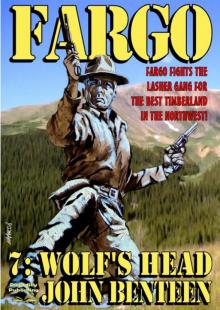 Wolf's Head (A Neal Fargo Adventure--Book Seven)
Wolf's Head (A Neal Fargo Adventure--Book Seven)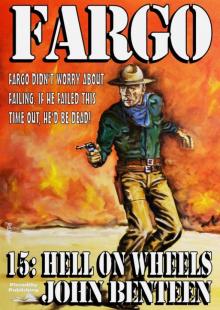 Hell on Wheels (A Fargo Western #15)
Hell on Wheels (A Fargo Western #15) Sundance 6
Sundance 6 Valley of Skulls (Fargo Book 6)
Valley of Skulls (Fargo Book 6)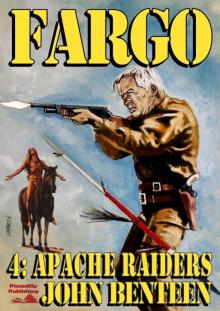 Apache Raiders (A Fargo Western #4)
Apache Raiders (A Fargo Western #4)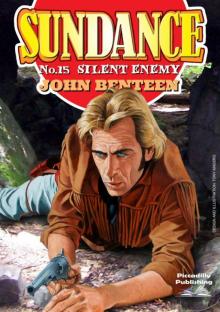 Sundance 15
Sundance 15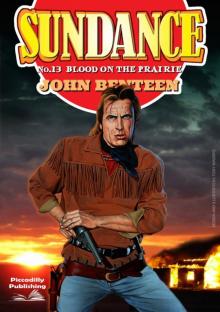 Sundance 13
Sundance 13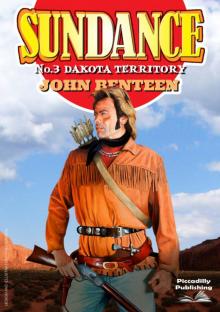 Sundance 3
Sundance 3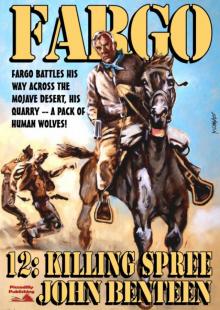 Fargo 12
Fargo 12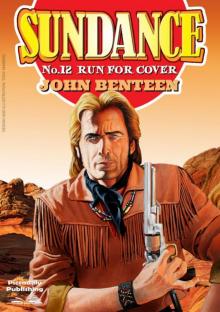 Sundance 12
Sundance 12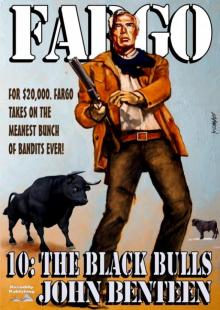 The Black Bulls (A Neal Fargo Adventure Book 10)
The Black Bulls (A Neal Fargo Adventure Book 10)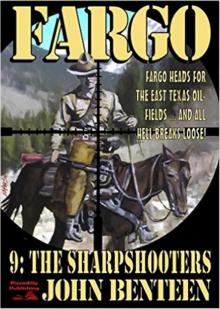 The Sharpshooters (A Fargo Western Book 9)
The Sharpshooters (A Fargo Western Book 9)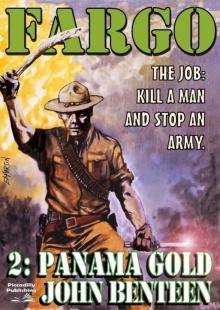 Panama Gold (A Neal Fargo Adventure #2)
Panama Gold (A Neal Fargo Adventure #2)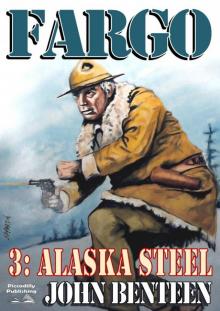 Alaska Steel (A Neal Fargo Adventure #3)
Alaska Steel (A Neal Fargo Adventure #3)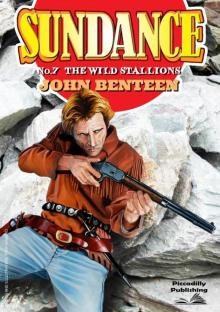 Sundance 7
Sundance 7 Overkill (Sundance #1)
Overkill (Sundance #1)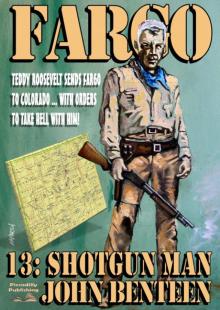 Fargo 13
Fargo 13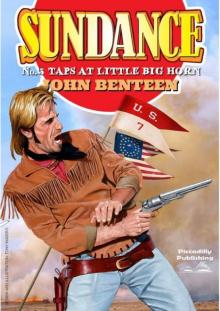 Sundance 5
Sundance 5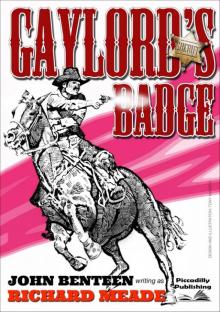 Gaylord's Badge
Gaylord's Badge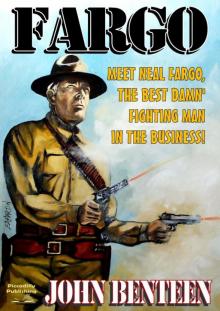 Fargo (A Neal Fargo Adventure #1)
Fargo (A Neal Fargo Adventure #1)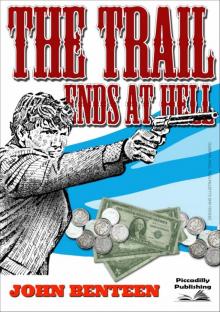 The Trail Ends at Hell
The Trail Ends at Hell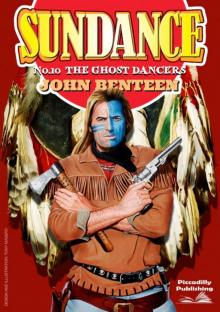 Sundance 10
Sundance 10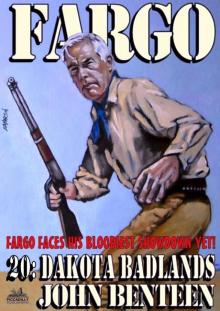 Fargo 20
Fargo 20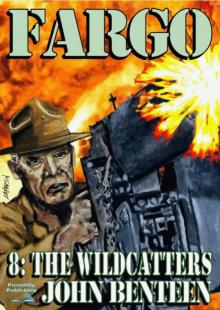 The Wildcatters
The Wildcatters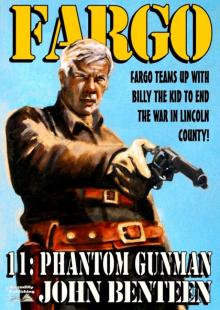 The Phantom Gunman (A Neal Fargo Adventure. Book 11)
The Phantom Gunman (A Neal Fargo Adventure. Book 11)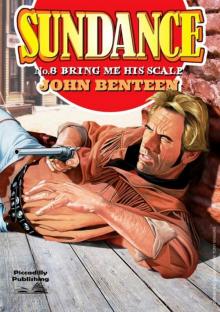 Sundance 8
Sundance 8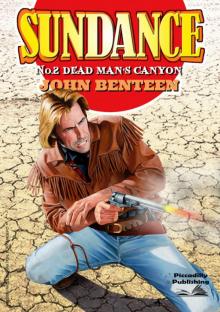 Sundance 2
Sundance 2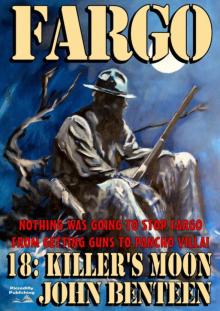 Fargo 18
Fargo 18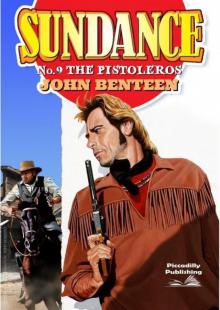 Sundance 9
Sundance 9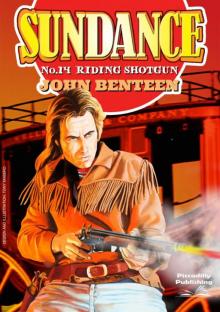 Sundance 14
Sundance 14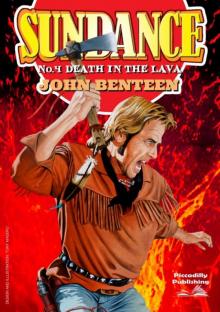 Sundance 4
Sundance 4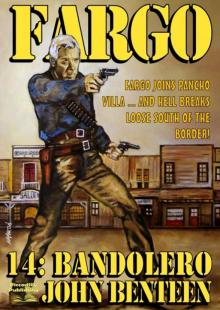 Bandolero (A Neal Fargo Adventure Boook 14)
Bandolero (A Neal Fargo Adventure Boook 14) The Wolf Pack (Cutler #1)
The Wolf Pack (Cutler #1)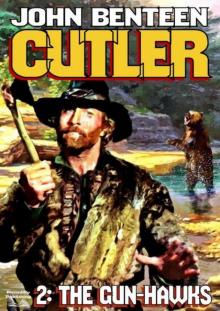 The Gunhawks (Cutler Western #2)
The Gunhawks (Cutler Western #2)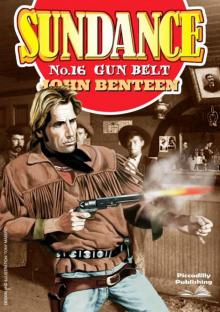 Sundance 16
Sundance 16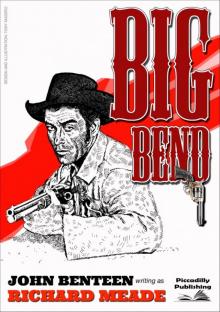 Big Bend
Big Bend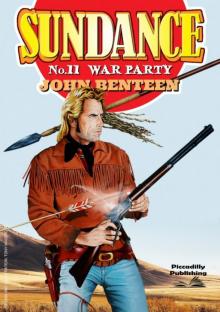 Sundance 11
Sundance 11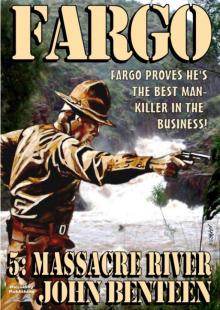 Massacre River (A Neal Fargo Western) #5
Massacre River (A Neal Fargo Western) #5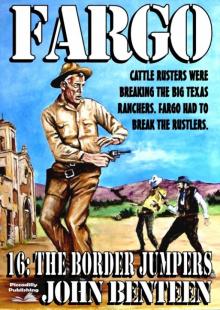 The Border Jumpers (A Fargo Western Book 16)
The Border Jumpers (A Fargo Western Book 16)